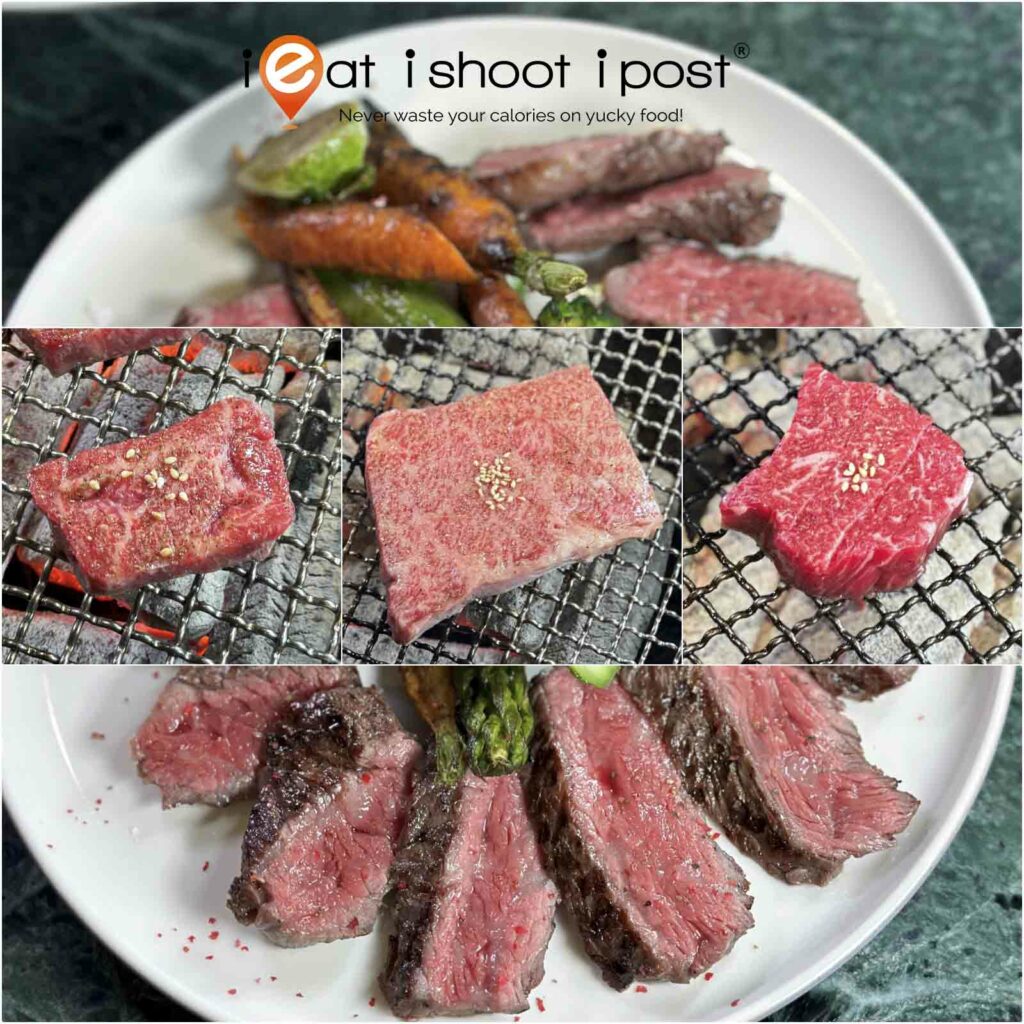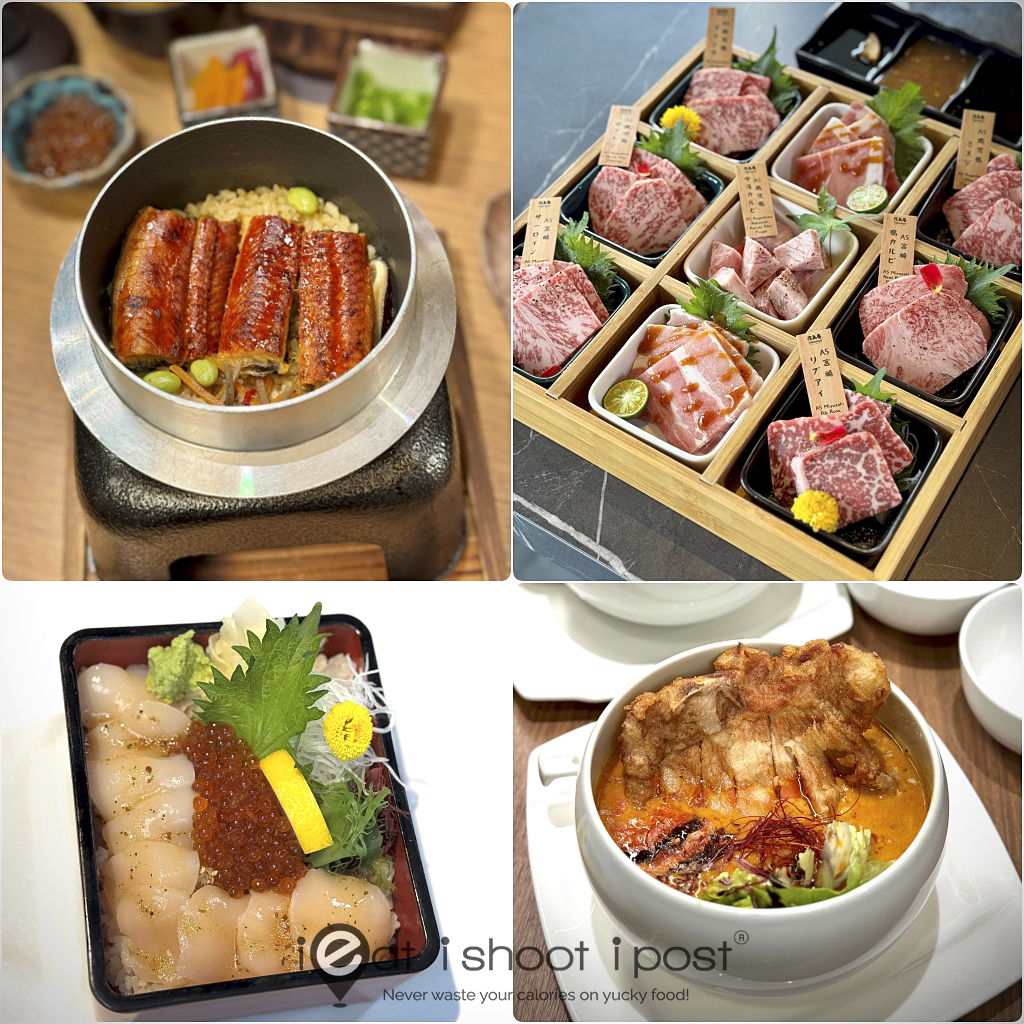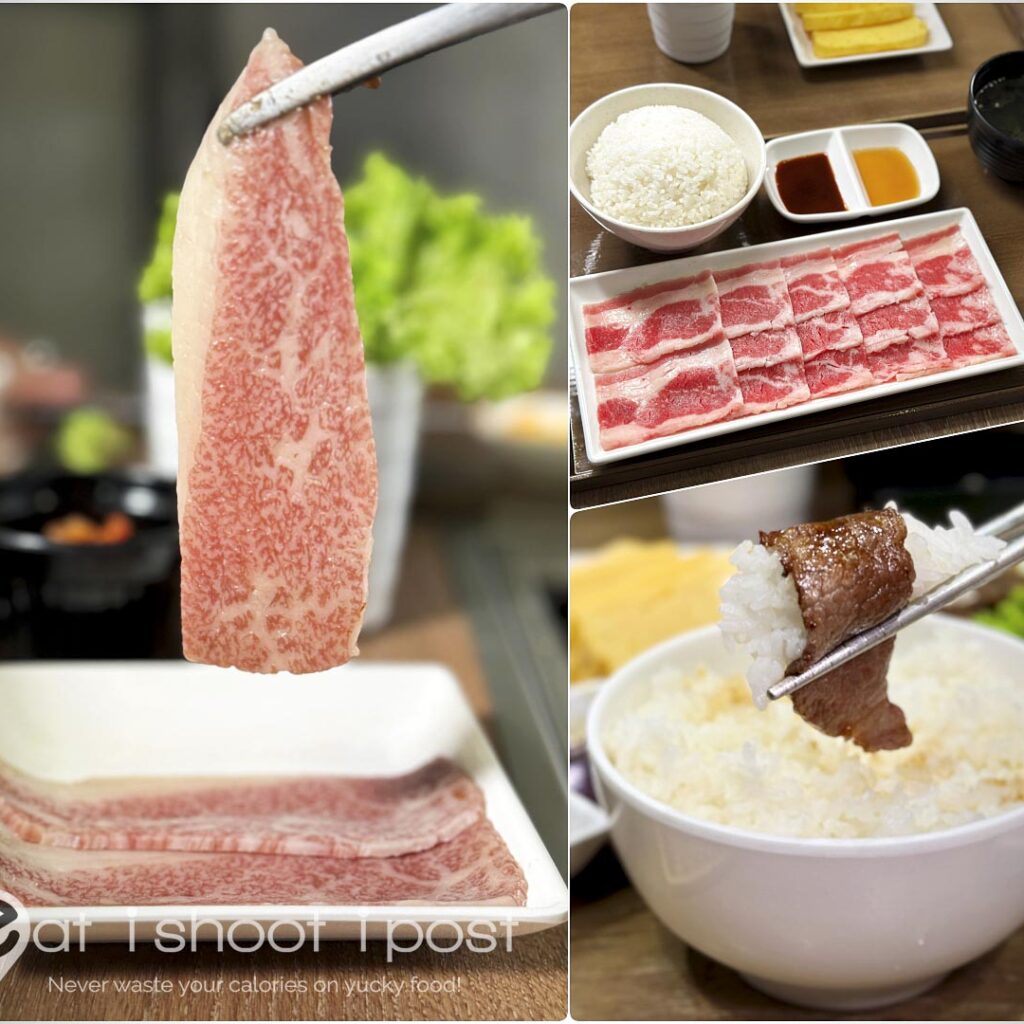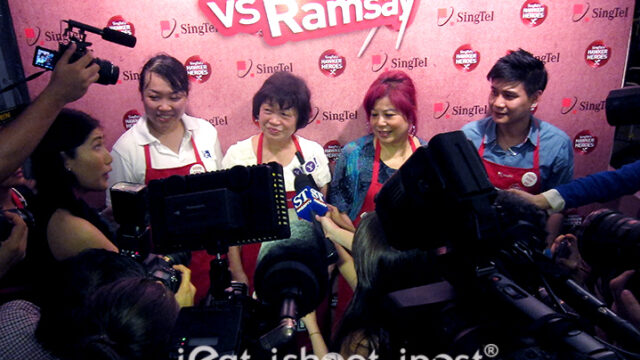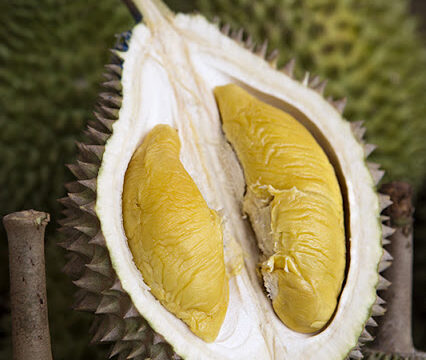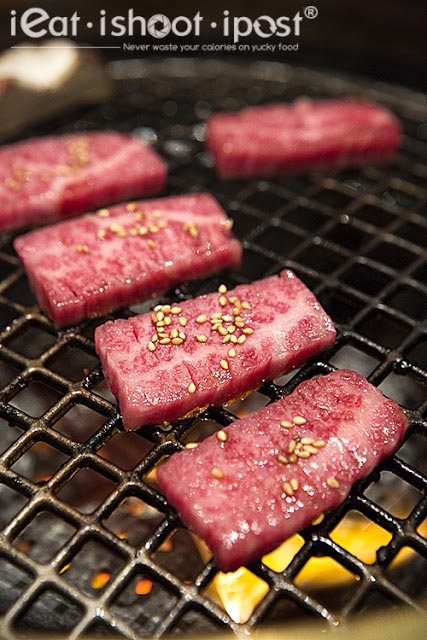
Ito Kacho Yakiniku Restaurant: Wagyu Beef Yakiniku Cuts Part 3 – ieatishootipost
This is Part 3 of our exploration of Yakiniku Beef Anatomy. If you are a bit lost, may I refer you to Part 1 and Part 2 of Wagyu Anatomy 101 where we covered various cuts of beef from the Ribeye to the Sirloin and the Chuck Rib to the Silverside. In Part 3, we are going to cover the belly portion of the Wagyu Cattle.
Now, you might be asking why we are doing this?
Well, the wonderful thing about Yakiniku is that since the meat is served in small bite sized pieces, not only do you get to savour the different parts of the Wagyu cattle, there is also much less wastage. In the West, a lot of the less popular cuts get turned into minced beef. However, in Yakiniku, the individual muscles of the cow is turned into bite sized delights and each cut has its own nuances in flavour and texture. That is what makes Yakiniku such an advernture for the beef lover.
So, in order to fully enjoy the Yakikiku experience, it pays to know a little bit about what you are ordering. If you have ever opened a Yakiniku menu and just order according to the prices, then this series of blog posts is for you. By the end of the article, you should know a bit more about the taste and textures of different parts of the Wagyu, so that you can make a wiser choice. As you will soon discover, more expensive cuts do not necessarily equate to a better experience!
Before we start on our anatomical adventure, here is the necessary background to the Wagyu beef that we will be savouring. Ito Kacho imports their beef directly from a farm in Kagoshima. Kagoshima, located on the southern tip of Kyushu island produces 18.5% of Japan’s beef. Lately, they have been promoting Kagoshima beef in Singapore and no doubt you would have heard people talking about Kagoshima Beef as if it is one of the top brands of Wagyu in Japan. This can be very confusing. Kagoshima Beef simply refers to the region of Japan where the beef comes from and just because it is Kagoshima Beef does not necessarily mean it is a very good Wagyu. Kagoshima Beef can still be graded A1 to A5 or even B and C. And even if it is graded A5, it simply refers to the amount of marbling in the beef and has nothing to do with the flavour of the beef. Different farms in Kagoshima sell their cattle through a co-op and their meat is labeled as Kagoshima beef for export. Members of the co-op all agree to feed their cattle with a standard feed so that they will produce beef of a certain quality and character. The advantage of this is that they are able to produce enough beef of similar quality to satisfy the demands of the export market. The disadvantage is that it becomes commoditised and loses its character.
So when the restaurant tells you they serve Kagoshima Wagyu, what does it mean? Simply that the beef comes from Kagoshima prefecture. That is all. It certainly does not mean that they are serving you a premium Wagyu that is superior than other Japanese Wagyu. So when confronted with Kagoshima Wagyu, the discerning beefeater would want to know a bit more about the farm that produces this Wagyu. Are they buying it from a co-op or direct from the farm. Is the meat chilled or frozen? What types of special feeds or techniques does that particular farm employ that makes their Wagyu special?
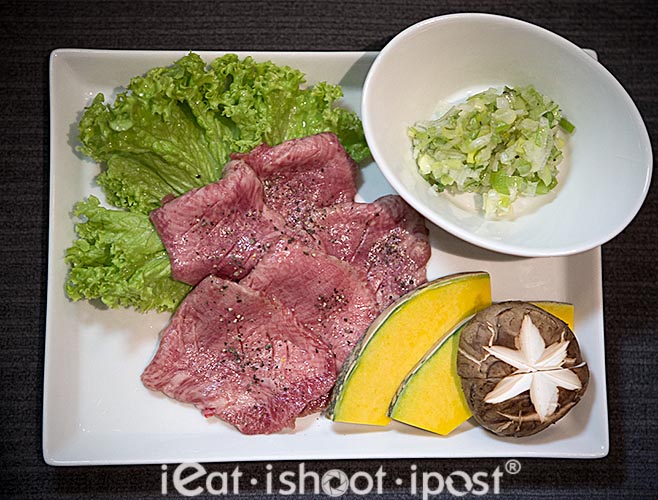
With that in mind, let’s get down to the beef shall we?
Ito Kacho imports their beef directly from a company in Kagoshima called Ito-ham which source their Wagyu from selected farms. They bring in A4 grade Wagyu which is chilled, not frozen and focus on just the belly (bara) part of the cow. What this means is that the prices won’t be as high as a restaurant that serves A5 tenderloin or ribeye as these prime cuts are the most expensive part of the beef cattle. However, that certainly does not mean that it is any less tasty. In fact, I feel that the less popular cuts are more tasty and better suited for Yakiniku then ribeye or sirloin which are better as a steak.
The Japanese like the bouncy texture of meat which develop flavour as you chew on it. That is why naizou (innards) is very popular in Japan. Beef intestine, when grilled, has a very chewy texture that is quite enjoyable. Like chewing gum, a little piece of intestine goes much further than a tender piece of meat. Gyutan (tongue) is very popular in Japan. The fact that every cow only possesses slightly more than a foot of tongue makes this quite a delicacy. Sliced thin and grilled, the meat has the texture akin to that of canned abalone and a beefy flavour with a slight iodine/metallic aftertaste. It’s something that grows on you.
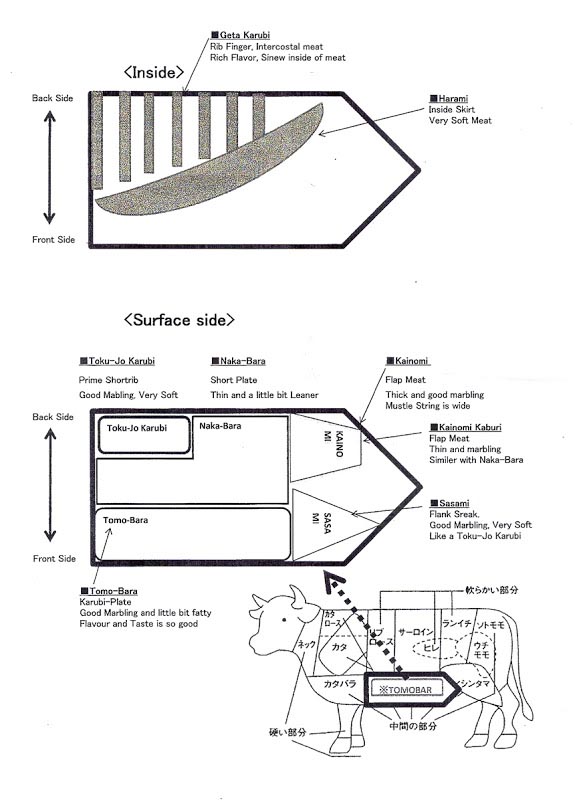
With the tongue out of the way, let us now focus on the different parts of the belly that Ito Kacho offers. The different cuts are shown in the diagram above. They essentially come from the part of the cow that corresponds to the front of your chest below the nipples to the belly area just above the pelvis. In the West, these correspond to the Short Plate and Flank cuts. The top diagram shows the part of the cow from the inside of the carcass while the bottom diagram shows the part for the cow from the outside.
Don’t be too surprised when I refer to the human body when describing the anatomy of the cow. Most mammals share the same anatomical blueprint as humans, hence you will be able to find the same muscle on your own body. I feel that a little knowledge in this area will enhance your appreciation of Yakiniku tremendously.
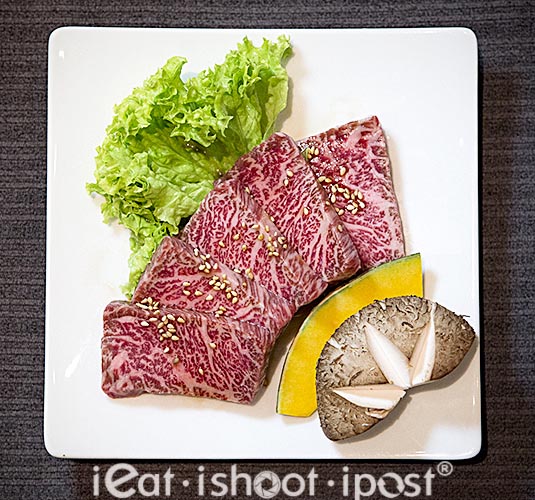
We start with two of the leaner cuts. The Kainomi is known as the Sirloin flap in the West. If you have eaten T bone steak before and have come across a steak where the Sirloin portion has a tail end that extends downwards. That bit will continue as downwards as the Sirloin flap. Anatomically, this is the M. obliquus abdominis internus muscle and is middle of three muscles that make up the wall of the belly. The muscle fibres here are thicker and coarser but it has a nice sweet and beefy flavour and is quite juicy. It is actually one of the best value for money cut in my opinion and I would definitely order it as part of my meal.
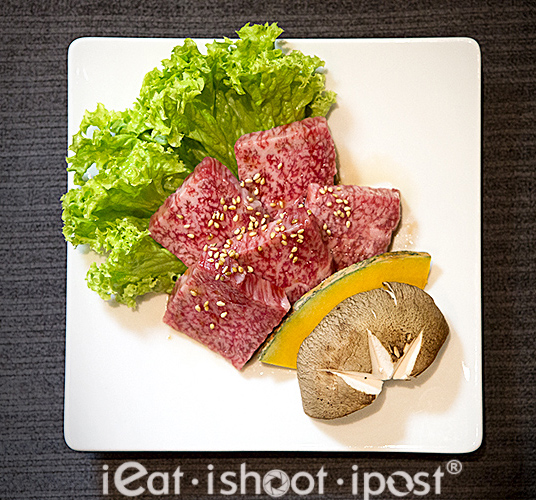
Naka Bara is cut from the Short Plate and is the outer layer of the abdominal wall anatomically known as the M. obliquus externus abdominus. I found it a bit more chewy and bouncey than the Kainomi and not as flavourful. So between the two, which are the same price, I would go for Kainomi.
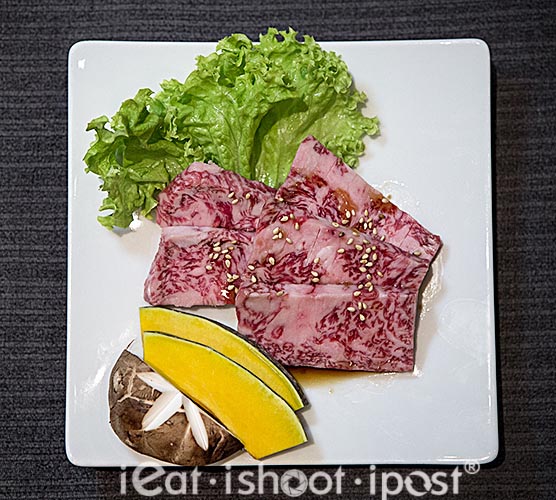
Skirt steaks are very popular in Mexican cuisine as Fajitas. Skirt steaks can be a bit confusing as there is the Inside Skirt and the Outside Skirt. Both are actually very different muscles. The Outside Skirt is the diaphragm which is the dome shaped muscle that divides the body into two cavities viz the thorax (lungs) and the abdomen (bowels). When you breathe in, the diaphragm muscles contract, flattening the dome which creates negative pressure and so you inhale. The middle part of the dome is all ligament so as you can imagine, when you trim off the middle part, you are left with a ring like muscle which skirts around the inside of the rib cage, hence the name, I presume.
The Inside Skirt is the M. transversus abdominis which is the innermost layer of the abdominal wall. On your body, it corresponds to the muscles between your ribcage and your hip where the “love handles” are.
Both inside and outside Skirt are thin and long muscles with muscle fibres running perpendicularly across its length. (like a ladder). The fibres are rough but still relatively tender and very flavourful since they line the inside of the abdominal cavity and are in direct contact with the innards. Some describe this as a beefy flavour, but I would like to think of it more as offal flavour. It is the kind of flavour that you get with the organ meats which are usually strong and metallic. Some might describe it as gamey. If you are not used to strong beefy flavour, it would be wise to avoid this.
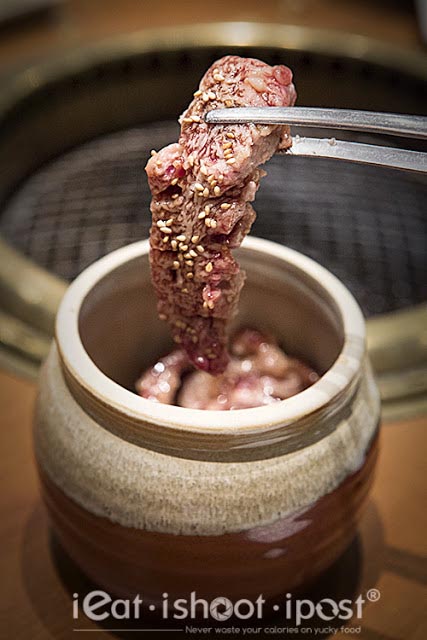
The strong flavour and tough texture lends well to marination and so that is what the chef does with the trimmings after he cuts out the sections which are presentable for yakiniku. The marinated Harami is very flavourful and excellent value. You could order a pot of it and eat with rice and you would have a good meal. However, the marination does negate the value of the Wagyu somewhat since the original flavour and sweetness of the Wagyu beef is overpowered by the flavours of the marinade.

Although the restaurant labels Tomo Bara as Karubi plate, from what I can gather from the diagram, it should correspond to Brisket Naval Plate which consists of the M Transversus abdominis and rectus abdominis.
I found the Tomo Bara to be rather rich, very juicy, delicate and somewhat less flavourful. It is good for those who like their meat rich and soft. For me, at the same price range, I would opt for Harami as I like the stronger flavour. But this is a cheaper alternative to the Tokujo Bara (see below) which is much more expensive and gives you the similar “burst in your mouth” feeling when you chew on it.

Geta Karubi consists of the muscles between the ribs which are known as the internal and external intercostal muscles. Together with the diaphragm (Outside Skirt) they help to expand the ribcage to enable the animal to breathe. This is one of my favourite cuts. There is only less than 1 kg of these in each animal and I love the chewiness of the meat. The texture is almost like raw squid and the meat is very sweet. I really enjoy chewing on the beef and slowly extracting and savouring the flavour. Definitely a must try if you are looking for something interesting.
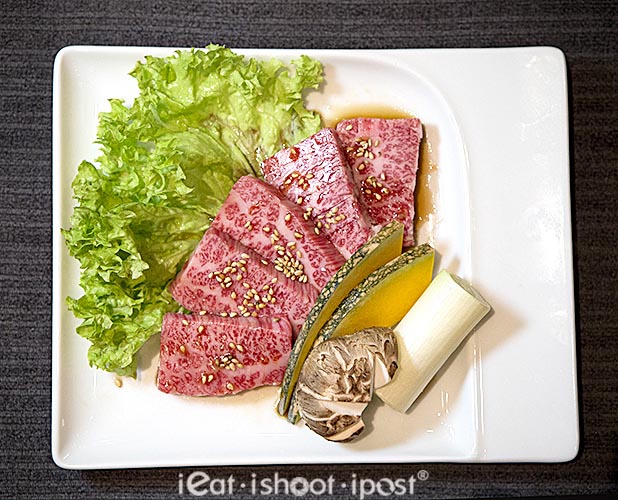
The Flank is that part of the body which we all know as the “Six Pack” which you can see in those guys who sweat it out in gyms and drink protein shakes rather than feasting on real meat at Yakiniku restaurants. Yeah, I have a Six Pack too, but I like to keep it hidden under the cooler bag.
Technically, the Flank the muscle known as the M. rectus abdominis and is easily recognized as a long, flat muscle with the fibers running longitudinally (lengthwise). This can be quite a tender piece of meat and in recent years has become quite popular in the West. I found the meat juicy and tender and the beefy flavour is not as strong as Harami. Sasami is essentially the continuation of Tomo Bara and both are quite similar except that presentation wise, Sasami can be cut into nice rectangles which is more attractive. The meat is also more delicate than Tomo Bara.
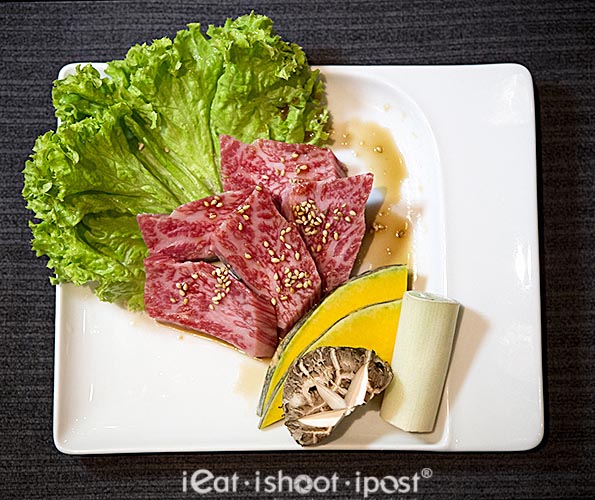
Finally we get to the most sought after piece of cattle real estate for Yakiniku, the premium Karubi. This is a popular cut for Yakiniku because the meat is chewy, juicy, sweet and flavourful. The meat is also very attractive. It is bright and beautifully marbled with a fine reticular (net like) pattern of fat. This comes from is the layer of muscle that covers the rib cage of the cattle and is technically known as M. Serratus ventralis. It is so named because the way the muscles attach to the ribs looks like the teeth of a saw (serrated). You often see this pattern in body builders in the rib area just under the armpits.
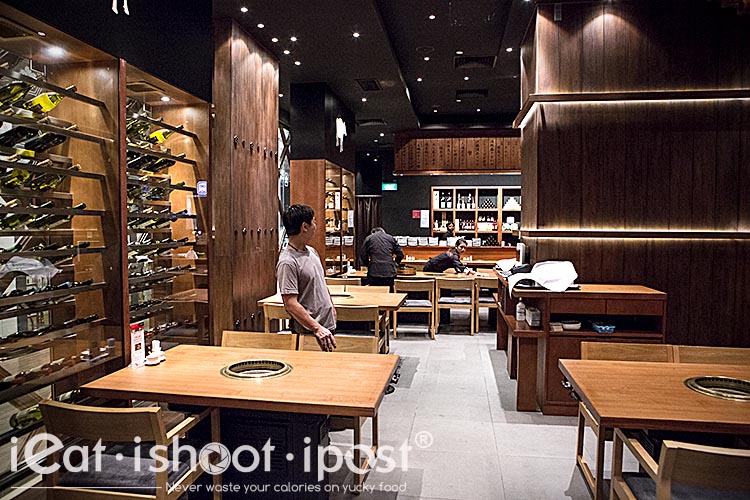
Conclusion
We had a good Yakiniku experience overall. The Wagyu was very tasty and I like the balance of the marinade here. It is also interesting that the restaurant only brings meat from the belly portion of the cattle. If you are going for a Wagyu meal, you can expect to pay around $100 per head which is not bad considering they use chilled and not frozen meat that is imported directly from Japan. 4.25/5
Ieatishootipost Special
7 Course Lunch/Dinner at $80++
1. Marinated Salmon Roe with Japanese Citrus.
2. Ito Kacho Dashi Tamago.
3. Ito Kacho Salad
4. 3 different kinds of wagyu. Kanomi,Naka Bara and Wagyu tongue plus Grill King Crab.
5. King Prawn Tempura with vegetables.
6. Ishi Yaki Bibimbap.
7. Lychee/Peach Sherbet.
Just ask for the ieatishootipost special set when you order
Offer valid till 11 Sep 2013. For lunch/dinner. Not valid for Fri, Sat, Sun and PH.
This was an invited review
References:
1. The Art of Beef Cutting, Kari Underly, Wiley 2011
2. Handbook of Australian Meat, 7th Edition. Aus Meat ltd 2005



